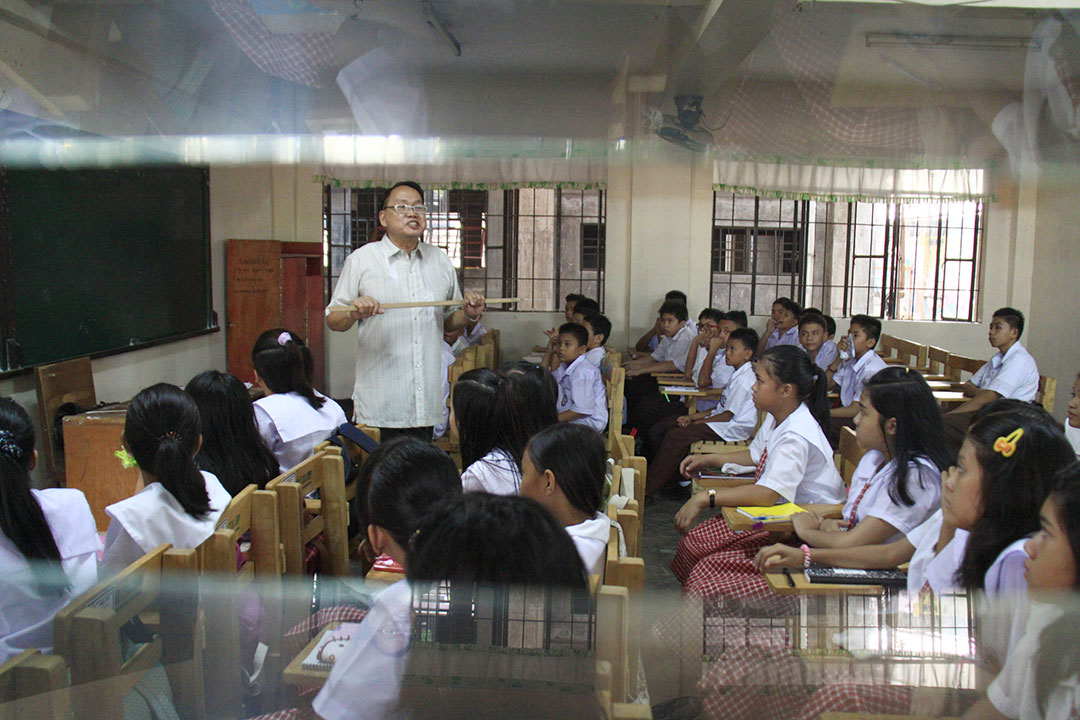
By Adrian H. Halili, Reporter
THE PHILIPPINE government must build at least 7,000 classrooms annually in the next 15 years to close the country’s severe public school classroom gap, the Philippine Institute for Development Studies (PIDS) said.
In a statement on Monday, PIDS highlighted the urgency of sustained infrastructure investment in education.
“If education is something important to us as a nation, we should be able to put our heads together to address this issue,” PIDS Senior Research Fellow Michael Ralph M. Abrigo said.
He said the Department of Education (DepEd) should consider alternative solutions beyond building alone. “DepEd is not in the business of constructing buildings. Their mission is improving education, and classrooms are just one part of that.”
Earlier this year, DepEd estimated it would take 55 years to bridge the backlog of about 165,000 classrooms if the present pace of construction continues.
To expedite progress, Mr. Abrigo urged the government to adopt flexible classroom scheduling, promote shared space agreements for underused facilities and develop a forward-looking infrastructure master plan.
He also recommended a forward-looking master plan that will be regularly updated to identify areas with impending demand and ensure that classrooms are built ahead of enrollment surges.
He also cited the need for transparent, data-driven planning and coordinated infrastructure deployment, noting that construction timelines are slowed by phased budgeting, site verification, bidding and hazard assessments.
A separate PIDS study identified the National Capital Region, Calabarzon, Soccsksargen and the Bangsamoro Autonomous Region in Muslim Mindanao as having the widest gaps in classroom-to-student ratios. Most shortages were reported in elementary schools, followed by junior and senior high schools.
The Second Congressional Commission on Education (EDCOM 2) has also urged DepEd to factor in population growth, building deterioration, disaster vulnerabilities, and the capacity of private schools when mapping out long-term classroom needs.
Under the 2025 national budget, DepEd was given P28 billion for basic education facilities, P7.18 billion of which was earmarked for new kindergarten, elementary and high school buildings, while P6.13 billion was allotted for school repairs.
Maria Ella Calaor-Oplas, an economics professor from De La Salle University in Manila, said the state should expand its school voucher program.
“One of the programs that can greatly facilitate education despite the limited classrooms is by government providing vouchers,” she said in a Facebook Messenger chat. “The government doesn’t have to worry about classrooms and the quality of education because the private schools should be able to provide that.”
Party-list Rep. Terry L. Ridon, convenor of think tank InfraWatch PH, said the government should pursue public-private partnerships (PPP) to help bridge the infrastructure gap.
“PPPs for public classrooms had already been undertaken in the past, and this has contributed to reducing the shortage, particularly as government continues to find itself in a very limited fiscal space,” he said.
However, Mr. Ridon cautioned that such arrangements must comply with competitive bidding processes to ensure optimal outcomes for the government.
Education Secretary Juan Edgardo M. Angara earlier said the agency might pursue PPPs to fast-track the construction of about 105,000 classrooms.